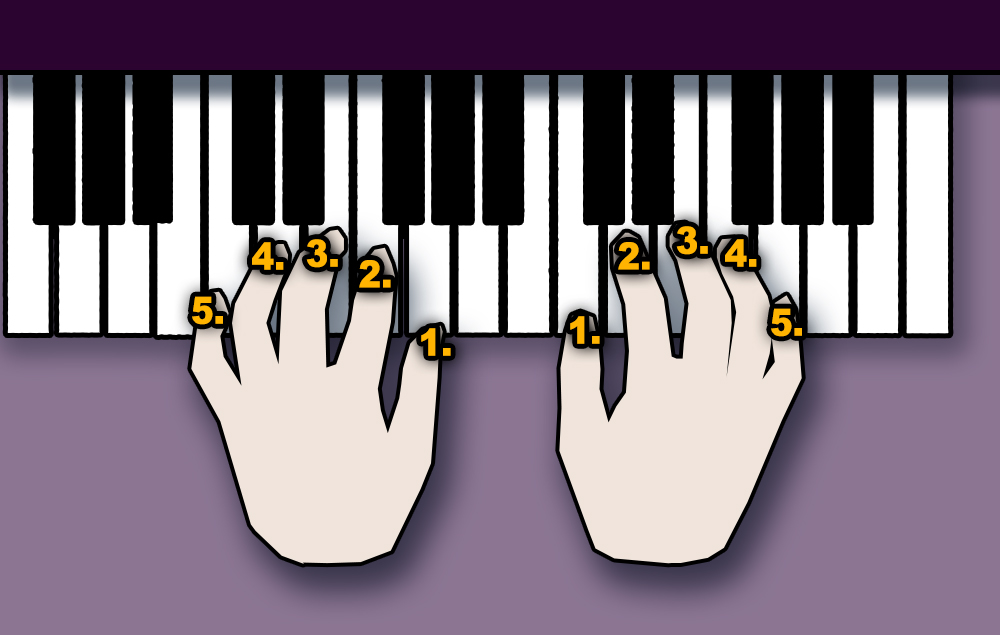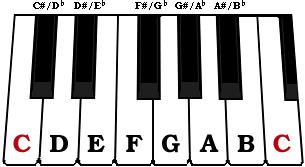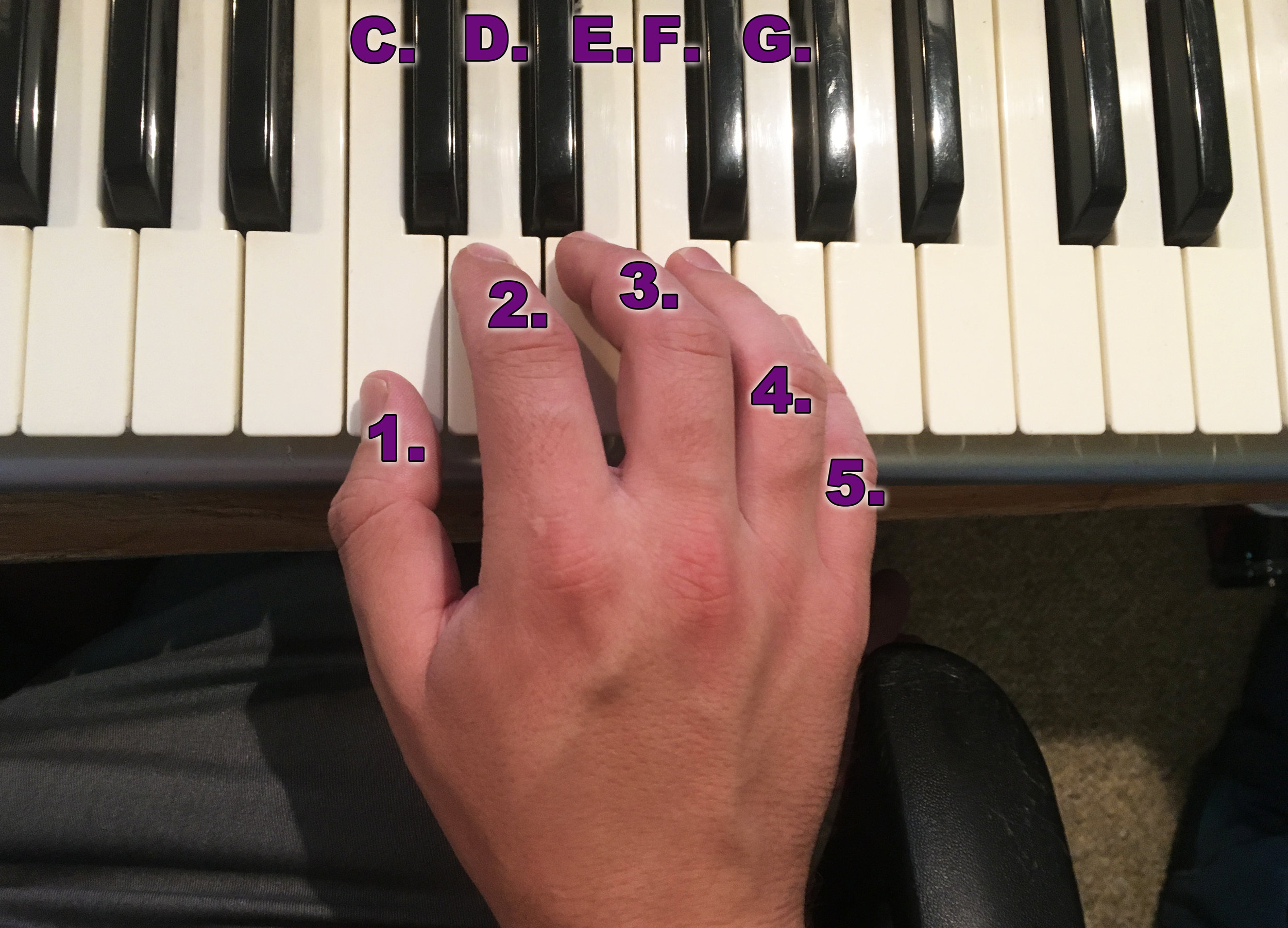Intro
Learn Piano Online
So, you’ve decided that you want to learn the piano. Good news, you’ve come to the right place! We’ve got all the resources you need to learn piano online. With just this simple lesson, you’ll have the skills necessary to find your way around a keyboard, and will be ready to to begin learning your first song, scale, taking your first lesson, or accomplishing whatever other goals you have!
Resources
Whether you are here because you have always wanted to learn to play the piano, or because you want to polish your playing skills, you’ll find what you need. New students: keep reading below or take a look at our Piano Teachers and take advantage of the free lessons. Intermediate Students: Polish your skills with a Private Lesson.
You should keep in mind that though learning piano is both fun and exciting, it also requires patience and commitment. Once you are ready to take this journey with us, take a deep breath and let's begin the very basic points that each pianist MUST cover.
Introductory Lesson:
Posture, Finger Position and Playing your first notes
Proper Posture
First of all, in order to play correctly and avoid injury, you must sit correctly. Plus, your posture is very important to take care of anyways, especially as you get older!
Body Posture
When sitting on the bench or seat, sit up straight, but not stiffly. Make sure you're not slouching. Again! Sit up straight,but not stiff.
Make sure you are sitting a suitable distance from the Piano: Your elbows should be at a 90-degree angle with your hands resting on the keys, wrists straight. You elbows should be slightly higher than the keys. You may have to adjust the height of your seat to ensure your elbows aren’t too high or too low. This will give you the needed mobility to play. (Reminder, your back should be straight).
You should be sitting with your knees slightly under the keyboard. Your feet should be flat on the floor you can move one foot slightly forward to use the pedals when needed. You can also use a stool if needed if the seat is too high.
Finally, artistic movement is totally fine, you can let yourself move and flow with the music, and lean towards the piano.
Hand Posture
Now that you’re sitting in the proper posture, let's focus on hand posture. Practicing and playing with the correct hand posture will not only guarantee that you are playing properly, but will also minimize fatigue, and stop you from getting hurt when playing for long hours.
Sit with your hands just above the keys, with your fingertips touching the white keys, but not among the black keys. Keep your hands cupped almost like they are holding a ball or sitting on a bubble. Keep your wrists relaxed. When playing, you want to keep your fingers firm and play with your finger tips. You also will need to keep your fingernails short.
Piano Finger Numbering
The next thing we are going to cover is finger numbering. Each finger on your hand has an assigned number, and it is important to memorize these numbers, as they are used to help learn correct finger placement for scales, arpeggios, musical passages, and chords.
The correct use of each finger will allow you to master new techniques and to execute speed and flexibility exercises properly.
From left to right, on your left hand your pinky is 5, ring is 4, middle is 3, pointer is 2 and thumb is one. On your right had the order is reversed: your thumb is 1, pointer is 2, middle is 3, ring is 4 and pinky is 5. But regardless of the hand, the number is the same.
Thumb: 1
Index finger: 2
Middle finger: 3
Ring finger: 4
Pinky finger: 5
Notes and keys on the keyboard
The piano keyboard consists of white and black keys. Your keyboard may have one of the following numbers of keys: 88, 76, 61, or 49 keys. In addition, the number of white and black keys will in accordance to the previously listed total key numbers. It may seem overwhelming at first, but with practice and repetition, you will memorize them.
The black keys are grouped in twos and threes, and you will notice that when you move to the right the notes will go higher. Our focus in this lesson will be on the white keys which are the notes A, B, C, D, E, F, and G, which then repeat, but with a higher note. Each white note can be found by its placement in relation to a black key. For example: you can find all the C's to the left of the each group of two black keys.
Middle C:
The first note we are going to look for is C. In order to find any C note, you will take a group of 2 black keys and then you will play the white key that is located to the left black key of the group of two. Middle C is the note which is usually near center of your keyboard, and is an important note for you to find when you first sit down at a piano. Once you find middle C, you then know where all the other notes are in relation to it. When reading music, knowing middle C helps you know which note on the sheet is which key on your keyboard. In the example Below, middle C is to the very left of the keyboard, and below that you can see middle C on the Treble Staff.
Here The Keyboard Starts with Middle C on the very Left.
You can locate middle C on keyboards with fewer than 88 keys by counting the C keys on your keyboard. Start from the left and use the following based on your keyboard size:
88-key – Middle C is the fourth C.
76-key – Middle C is the third C.
61-key – Middle C is the third C.
49-key – Middle C is the third C.
This Keyboard has a total of 49 keys or 5 C’s. Therefore Middle C is the highlighted key.
If you’re unsure about the size of your keyboard, simply count both its white keys and black keys. You can also find your keyboard’s size by counting the total number of C keys:
88-key – You will count eight C’s (including the very last key on the board).
76-key – has six C’s.
61-key – has six C’s (including the very last key).
49-key – has five C’s (including the very last key).
Playing your first Notes
You will only be using your right hand for this exercise. Make sure your hand is relaxed, and curved like it’s sitting on a bubble.
Next, place your number one finger (Thumb right hand) on the Middle C key, your number two finger should be placed directly on the right key next to the Middle C note (this is the D note), and your third finger will be by default placed on the note that follows to the right(E), then follow with your 4th on F and 5th on G.
Take a quick moment to memorize that hand position, this is a right hand c position!
First Exercise
Pressing one finger at a time, play 1 2 3 4 5(C,D,E,F,G). Now follow this pattern: 12345, 12345, 54321,54321, 12345,54321, 12345, 54321, 13245,53421. That’s it, you’ve done your first exercise!











